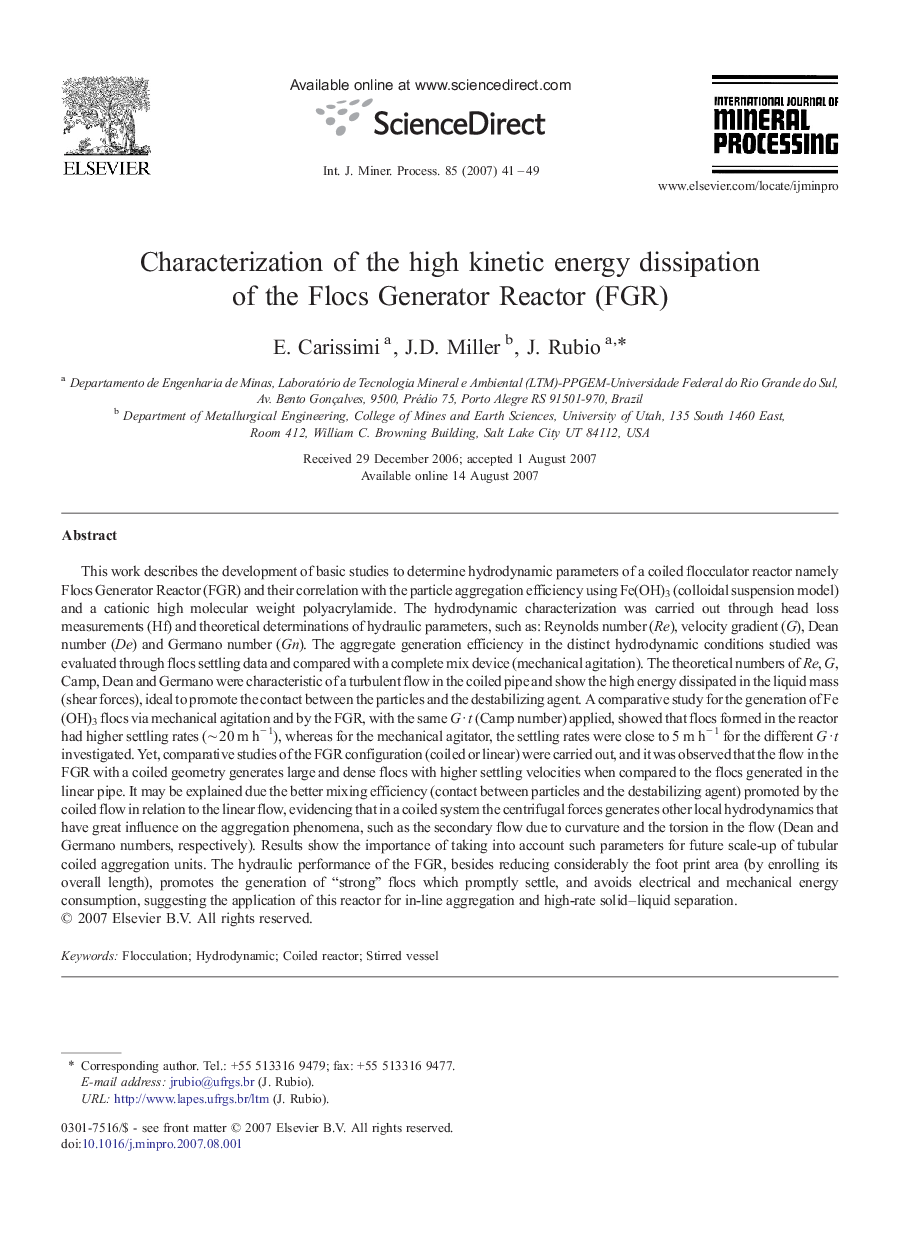| کد مقاله | کد نشریه | سال انتشار | مقاله انگلیسی | نسخه تمام متن |
|---|---|---|---|---|
| 214528 | 1425848 | 2007 | 9 صفحه PDF | دانلود رایگان |

This work describes the development of basic studies to determine hydrodynamic parameters of a coiled flocculator reactor namely Flocs Generator Reactor (FGR) and their correlation with the particle aggregation efficiency using Fe(OH)3 (colloidal suspension model) and a cationic high molecular weight polyacrylamide. The hydrodynamic characterization was carried out through head loss measurements (Hf) and theoretical determinations of hydraulic parameters, such as: Reynolds number (Re), velocity gradient (G), Dean number (De) and Germano number (Gn). The aggregate generation efficiency in the distinct hydrodynamic conditions studied was evaluated through flocs settling data and compared with a complete mix device (mechanical agitation). The theoretical numbers of Re, G, Camp, Dean and Germano were characteristic of a turbulent flow in the coiled pipe and show the high energy dissipated in the liquid mass (shear forces), ideal to promote the contact between the particles and the destabilizing agent. A comparative study for the generation of Fe(OH)3 flocs via mechanical agitation and by the FGR, with the same G · t (Camp number) applied, showed that flocs formed in the reactor had higher settling rates (∼ 20 m h− 1), whereas for the mechanical agitator, the settling rates were close to 5 m h− 1 for the different G · t investigated. Yet, comparative studies of the FGR configuration (coiled or linear) were carried out, and it was observed that the flow in the FGR with a coiled geometry generates large and dense flocs with higher settling velocities when compared to the flocs generated in the linear pipe. It may be explained due the better mixing efficiency (contact between particles and the destabilizing agent) promoted by the coiled flow in relation to the linear flow, evidencing that in a coiled system the centrifugal forces generates other local hydrodynamics that have great influence on the aggregation phenomena, such as the secondary flow due to curvature and the torsion in the flow (Dean and Germano numbers, respectively). Results show the importance of taking into account such parameters for future scale-up of tubular coiled aggregation units. The hydraulic performance of the FGR, besides reducing considerably the foot print area (by enrolling its overall length), promotes the generation of “strong” flocs which promptly settle, and avoids electrical and mechanical energy consumption, suggesting the application of this reactor for in-line aggregation and high-rate solid–liquid separation.
Journal: International Journal of Mineral Processing - Volume 85, Issues 1–3, 5 December 2007, Pages 41–49